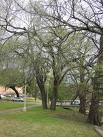Soft Elm Tree Information
Images of Soft Elm:






Soft Elm grows in the following 41 states and provinces:
Alabama, Arkansas, Connecticut, Delaware, Florida, Georgia, Hawaii, Illinois, Indiana, Kansas, Kentucky, Louisiana, Maine, Manitoba, Maryland, Massachusetts, Michigan, Minnesota, Mississippi, Missouri, Nebraska, New Brunswick, New Hampshire, New Jersey, New York, North Carolina, North Dakota, Ohio, Oklahoma, Ontario, Pennsylvania, Rhode Island, Saskatchewan, South Carolina, South Dakota, Tennessee, Texas, Vermont, Virginia, West Virginia, WisconsinInformation about Soft Elm:
The Ulmus Americana is commonly known as the American Elm, Florida Elm, Soft Elm, Water Elm as well as White Elm.
The currently accepted scientific name for American elm is Ulmus americana L. . Recognized varieties include U. americana var. americana and U. americana var. floridana, which is restricted to the coastal plains from eastern North Carolina to central Florida .The typical variety of American elm (var. americana) is found throughout eastern North America . Its range extends from southern Newfoundland westward through southern Quebec and Ontario, northwest through Manitoba into eastern Saskatchewan, then south on the upper floodplains and protected slopes of the Dakotas. It is found in the canyons and floodplains of northern and eastern Kansas and in eastern Oklahoma and central Texas. American elm is common along the Gulf Coast and east into central Florida .Some of the information provided here is attributed to:Coladonato, Milo. 1992. Ulmus americana. In: Fire Effects Information System, [Online]. U.S. Department of Agriculture, Forest Service, Rocky Mountain Research Station, Fire Sciences Laboratory (Producer). , available at the USDA Fire Effects Information System (FEIS) website